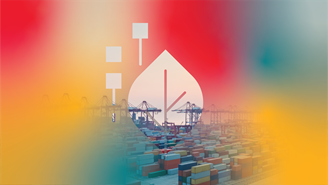Italy is the birthplace of the accounting and credit systems and is home to some of the world’s oldest banks. Despite this legacy, poor lending decisions in the past decade and a high number of non-performing loans (NPLs) is putting the Italian banking sector at risk. This article will explore the connection between responsible product marketing practices and the financial stability of Italian banks by analyzing Sustainalytics’ ESG data.
Two Italian banks have made headlines in 2019 over capital concerns: Banca Carige and Banca Monte dei Paschi di Siena (MPS). Carige has been put under temporary administration by the European Central Bank (ECB) after its main shareholders abstained from a vote to approve a EUR 400 million capital raise in December 2018. MPS has been asked by the Single Supervisory Mechanism, an arm of the ECB that assesses how EU banks operate, to increase its coverage of bad loans. Two other banks, Banca Popolare di Vicenza and Veneto Banca, were liquidated in a USD 19 billion bailout in 2017 due to bad loans stemming from difficulties in the Italian debt market between 2007 and 2010 and in the Veneto region between 2014 and 2017[i].
Why Are Italian Banks on the Edge?
The Italian banking sector is characterized by a community-oriented culture. Several banks have roots going back centuries and have built deep, long-standing relationships with customers.[ii][iii] Moreover, Italian retail investors have historically bought bonds – even risky ones – sold by banks.[iv][v] These investors held about EUR 200 billion of senior bank debt (~33%) and EUR 31 billion of subordinated bank debt (~50%) in 2015.[vi] Italian households experienced a loss of EUR 3.1 bn in debt securities in Q3 2018.[vii]
High levels of NPLs can pose risks to the financial system and make it challenging for banks to be profitable. Despite Italian banks gradually decreasing the number of NPLs on their books, they still had EUR 285 billion in 2017, accounting for roughly 9.7% of all NPLs in the Eurozone.[viii][ix] The NPLs consisted of loans made to small and medium enterprises, which were unable to repay due to the weak Italian economy in late 2000s and the early 2010s.[x] Poor lending criteria also contributed to the increase in NPLs during the Italian debt crisis.
Product Governance vs. Resilience in Italy
Product Governance is one of Sustainalytics’ Material ESG Issues (MEI) and is defined by how companies manage their responsibilities vis-à-vis clients (quality and/or safety of their products and services). Emphasis is put on quality management systems, marketing practices, fair billing and post-sales responsibility. Meanwhile, Resilience is defined as the ability of banks to withstand negative shocks arising from changes in economic conditions, which may also cause social impacts.
We analyzed the performance of six major Italian banks on the Responsible Product Offering and Asset Quality indicators (see Figure 1). Responsible Product Offering assesses the strength of a financial institution’s initiatives to market products and services responsibly. Asset Quality measures a financial institution’s exposure to NPLs relative to total assets as a measure of credit risk. Our sample accounted for 84.6% of Italy’s NPL stock in 2017.
The six Italian banks are Banca Carige S.p.A. – Cassa di Risparmio di Genova e Imperia, Banca Monte dei Paschi di Siena, Intesa SanPaolo (includes Veneto Banca and Banca Popolare di Vicenza), Unione di Banche Italiane, Mediobanca, and UniCredit S.p.A.
Our data shows average performance across the sample on Responsible Product Offering (45). The top performer (FI #5) on Responsible Product Offering reports having managerial responsibility for customer-related measures, which we consider good practice. The most commonly reported action by the sample was a “Policy commitment on responsible products and services”, which we consider a baseline requirement for banks.
Meanwhile, our data on Italian banks shows low-to-medium performance on Asset Quality (29). The highest performing bank (FI #2) on Asset Quality has been aggressively reducing its NPL stock. Between FY2016 and FY2017, the bank decreased the value of NPLs by 34%. It is important to note that five of the six banks in the sample have high or very high NPL levels, according to our methodology. As well, it is notable that two of the banks (FI #3 and #5) recorded scores of 0 on Asset Quality with very high NPL levels. Despite its poor score, FI #5 had the second-lowest number of NPLs in our sample and reduced this number by one-quarter in 2018.
One reason for the low average performance on Asset Quality (33) is the high number of NPLs among our sample. Reducing the volume of NPLs within the financial system could help to mitigate a future debt crisis, and this is where close regulatory oversight should play a role. Without robust lending criteria, Italian banks may have higher NPLs and face greater challenges in lowering this figure in the future.
Conclusion
Our sample suggests overall average performance among Italian banks with respect to the Responsible Product Offering indictor and low-to-medium performance for the Asset Quality indicator. Poor lending criteria may have a detrimental impact on Asset Quality due to an increase in NPLs, which leads to increased scrutiny of capital reserves. To mitigate this relationship in the long term, institutional investors can play a constructive role through their engagements with Italian financial institutions by asking these key questions:
- How are income levels considered when assessing a retail investor’s risk profile?
- How are Italian banks assessing the impact that loans may have on their NPLs in the future?
- What actions are banks taking to ensure that SMEs and individuals applying for loans are creditworthy?
By improving Product Governance practices, Italian banks may be able to regain consumer trust. Perhaps most importantly, such measures could also help to reassure markets and remove the need for further EU interventions over time.
[i] Seven Pillars Institute (p35 of doc)
[v] International Monetary Fund
[vii] Bank of Italy Statistics – Financial Accounts Q3 2018, 18 January 2019, p.1
[viii] Bank of Italy Annual Report 2017, p168




